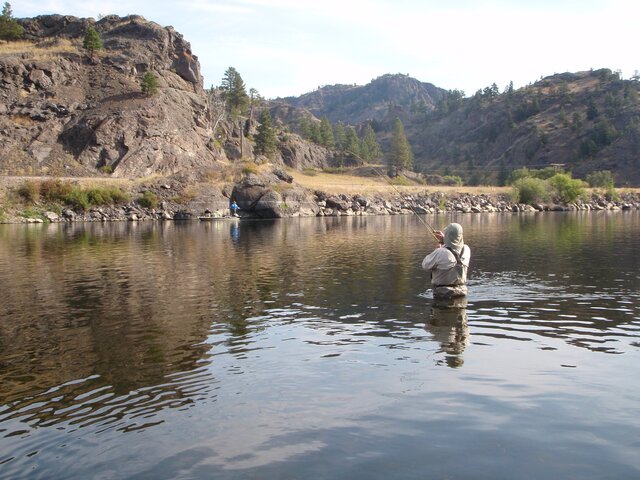When trout become pressured and the usual upstream dry fly presentation isn't working, the one thing the angler can try is a downstream presentation to the feeding fish. Often fish that have become shy due to heavy pressure can be fooled by this technique. The disadvantage of this method is you are much more likely to spook the fish, the angler must be careful to keep a low profile and be conscious of any mud, silt or debris that they may be disturbing that might float down and spook the fish. The advantage is that the fly is the first thing the fish sees, not the leader or line. Getting the fly into the feeding lane is also easier just by casting farther than the feeding lane and skating it back in to the line and then releasing the slack.

Down Stream Dry Fly Fishing
The one thing the angler must do to be successful is wait until the fly, leader and line are past the fish before picking it up for your next cast. Putting a mend in your line or making an "S" cast will let the fly naturally drift down to the fish. Remember when using this method to delay on your strike for a little bit, you want to give the fish time to close its’ mouth on the fly, otherwise you will just pull it up and out when you strike.

